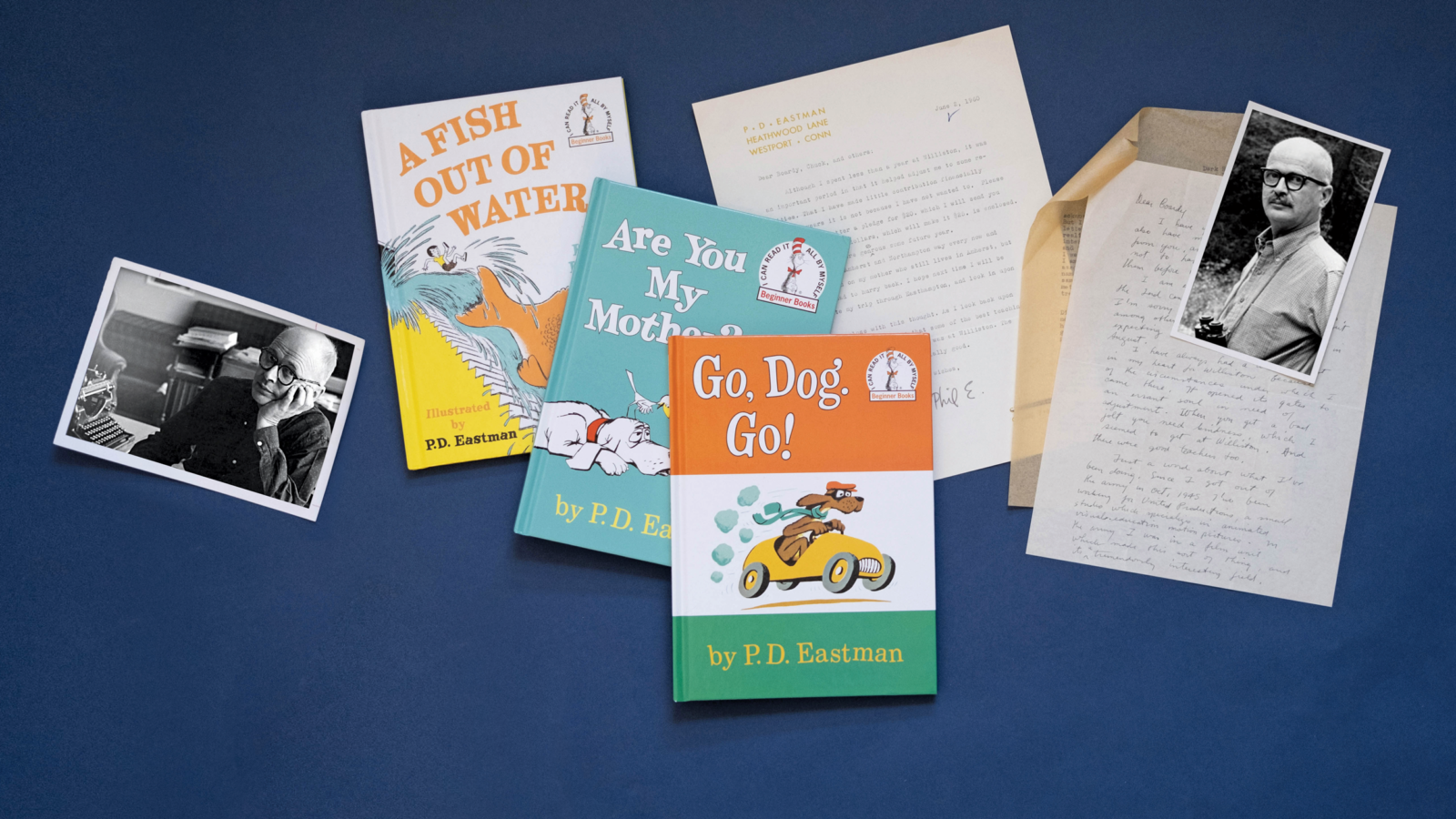Insights from the letters of illustrator and author P.D. Eastman ’30
Born in 1909, acclaimed children’s book author, illustrator, and animator Philip Dey “P.D.” Eastman ’30 was raised in a large house near Amherst College, where his father, Clarence, was a professor of German. One of three brothers, young Phil followed the eldest, Tony, to Andover, but transferred to Williston Academy in February of his senior year. (The youngest, Karl Eastman ’32, would follow Phil to Williston.) The reasons behind Phil’s transfer are not noted in his Williston file, but he offers a hint in a 1947 letter to his friend and former French teacher Howard “Boardy” Boardman. “I have always had a warm spot in my heart for Williston because of the circumstances under which I came there,” he wrote from Los Angeles, where as a storyboard artist for United Productions he was helping create the Mr. Magoo cartoons, among others. “It opened its gates to an errant soul in need of adjustment. When you get a bad jolt you need kindness, which I seemed to get at Williston.”
After graduating from Amherst College in 1933 and studying at the National Academy of Design in New York, Eastman worked for the upstart Walt Disney Studios, Warner Bros. cartoons, and others. During World War II, he served making orientation films in the Army’s Signal Corps Film Unit, which happened to be headed by Theodore Geisel, better known today as Dr. Seuss. Geisel would become a mentor and colleague after the war when Eastman moved to Westport, Connecticut, and began writing and illustrating picture books under the Dr. Seuss Beginner Book imprint. Beginning in 1958 with Sam and the Firefly, Eastman turned out a series of childhood classics, including Are You My Mother?, Go, Dog. Go!, and A Fish Out of Water (which he illustrated). Married in 1941 to Mary Louise Witham, he had two sons, one of whom, Tony, also became a book illustrator. Eastman died from Parkinson’s complications in 1986.
In 1960, enclosed with a contribution to the school, Eastman sent Boardman and others a note that reflected glowingly on his time in Easthampton, while revealing the playful wit that informs so much of his work. “As I look back upon school years, I am convinced that some of the best teaching I encountered, school or college, was at Williston,” he noted. “The man they had in French was especially good.”

